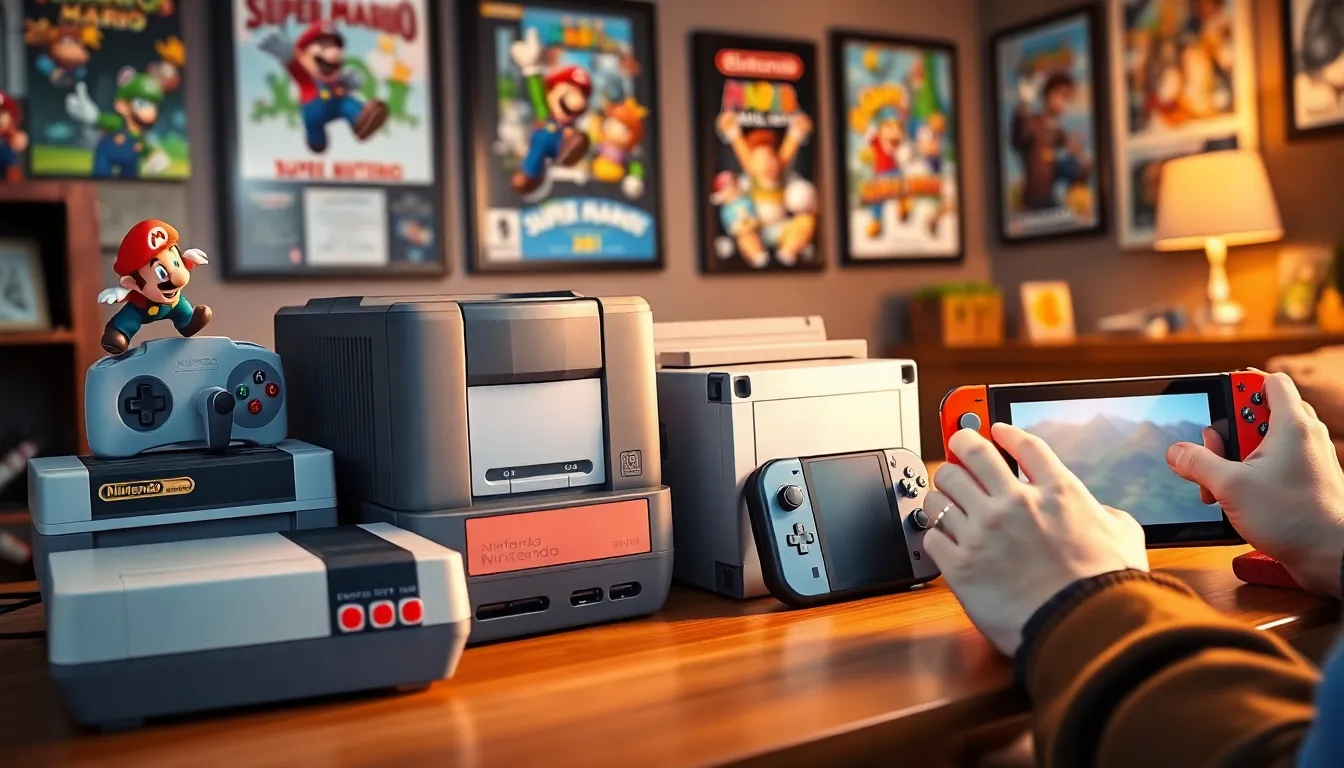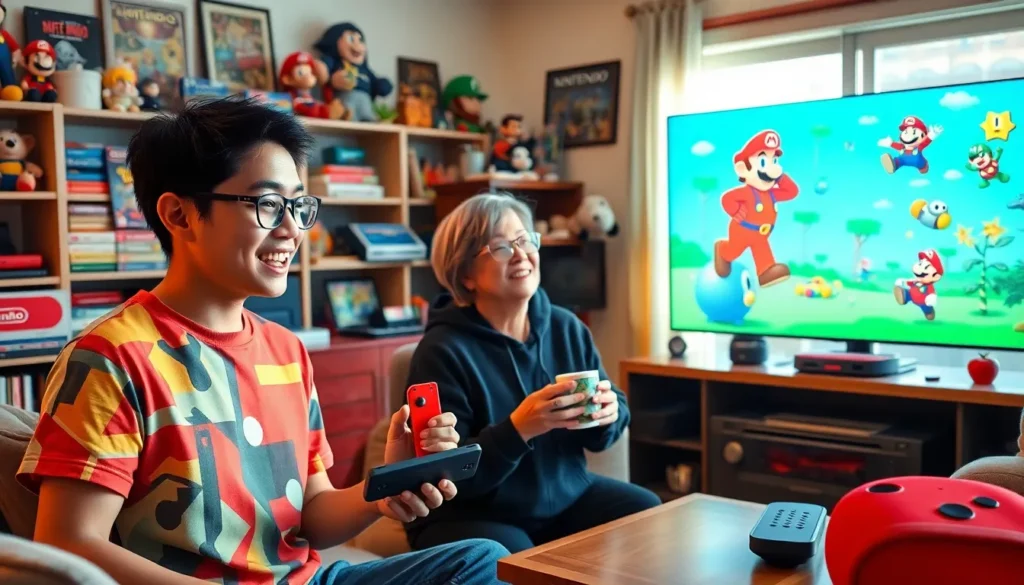Table of Contents
ToggleNintendo has long been a cornerstone of the gaming industry, captivating audiences with its innovative consoles and enchanting games. From the bright pixels of the NES to the immersive experiences offered by the Nintendo Switch, each generation brings with it new milestones and milestones. This article explores the evolution of Nintendo’s console history, its cultural significance, its role in online gaming, community engagement, and what lies ahead for this influential brand. Join us on a journey through the vivid history of Nintendo and contribute your thoughts as a gamer in the making.
The Evolution Of Nintendo’s Console History

Nintendo’s journey in the gaming world began in 1889, primarily as a playing card company. But, the transition to video games started in the late 1970s, marking the dawn of a gaming legacy.
Major Milestones In Nintendo’s Journey
The release of the Famicom (Family Computer) in Japan in 1983 is a significant milestone that led to the global popularity of the Nintendo Entertainment System (NES) in 1985. This console not only rejuvenated the gaming market post the video game crash of 1983 but also introduced legendary franchises like Super Mario Bros. and The Legend of Zelda.
As the years progressed, Nintendo continued to innovate. The Super Nintendo Entertainment System (SNES) followed, providing enhanced graphics and a robust library of titles, solidifying Nintendo’s status as a powerhouse in console gaming.
With the Nintendo 64, released in 1996, gamers experienced 3D gaming for the first time with iconic titles like Super Mario 64, which set standards for future 3D platformers. The GameCube introduced innovative gaming experiences with its compact design and unique control schemes.
The Wii, released in 2006, revolutionized gaming with motion controls and reached a broader audience. Then came the Wii U, which, even though its mixed reviews, laid the groundwork for the Nintendo Switch. Launched in 2017, the Switch combined home console and portable gaming, creating a unique gaming experience that continues to set benchmarks in the industry.
The Impact Of Nintendo On Gaming Culture
Nintendo’s influence extends far beyond its console sales or game releases. The company has helped shape gaming culture in numerous ways.
Iconic Nintendo Franchises and Their Legacy
Franchises like Super Mario, The Legend of Zelda, and Pokémon have defined genres and created lasting communities.
- Super Mario revolutionized platforming games and remains a benchmark for game design and playability.
- The Legend of Zelda introduced intricate storytelling and exploration, paving the way for action-adventure games.
- Pokémon, with its engaging mechanics and collectibility, brought a new dimension to role-playing games, leading to cultural phenomena with its anime series and trading card games.
These franchises not only shaped players’ experiences but also fostered a sense of community, creating enthusiastic fan bases that span generations. Nintendo’s ability to adapt its iconic characters and franchises while maintaining core values has kept fans engaged and brought new players into the fold.
The Role Of Nintendo In Shaping Online Gaming
As multiplayer gaming emerged, Nintendo took measured steps in incorporating online functionality.
Nintendo’s Approach To Game Design
Nintendo has often prioritized accessibility and straightforward design over technical prowess. For example, their online service, Nintendo Switch Online, enhances the gaming experience while maintaining simplicity.
Games like Splatoon and Super Smash Bros. Ultimate have thrived in the online landscape, encouraging competition while fostering community interaction through tournaments and events. While Nintendo initially hesitated to adopt online gaming fully, its recent titles showcase a commitment to evolving its online presence without compromising its unique identity.
Fan Reactions and Community Engagement
Nintendo has grown a vibrant community of fans who actively participate in dialogues about the brand.
Fans express their opinions, suggestions, and criticisms through social media platforms, forums, and fan sites. This engagement often influences Nintendo’s decisions about game development and future console features.
Nintendo Direct, the company’s presentation format, serves as a platform where fans eagerly anticipate announcements. The excitement surrounding these events highlights the deep connection between Nintendo and its audience. Community-driven initiatives like fan art, mods, and speedruns also showcase how fans engage with Nintendo’s beloved franchises, leading to a richer gaming culture.
The Future Of Nintendo: What’s Next?
As the gaming landscape rapidly evolves, thoughts about Nintendo’s future spark intrigue among fans.
With advancements in technology like virtual reality, augmented reality, and cloud gaming, many theorize what direction Nintendo will take next.
Some analysts speculate that Nintendo may incorporate these technologies into its upcoming games and consoles, maintaining its reputation for innovation. The upcoming releases could potentially expand existing franchises or even introduce entirely new titles that capture the whimsical charm of earlier games while exploring modern gameplay mechanics.
Also, Nintendo may focus more on subscription-based models or unique online experiences that further integrate players into an online gaming ecosystem, potentially building upon their existing successes.
Conclusion
Nintendo’s storied history showcases an unwavering commitment to innovation, engagement, and community. The impact on gaming culture is immeasurable, with iconic franchises that continue to resonate with old and new gamers alike. As the company forges ahead, blending cherished legacy with fresh ideas, the gaming community eagerly anticipates Nintendo’s next big move, confident that whatever it may be, it will resonate like its timeless classics.







